The Torque Converter in Operation
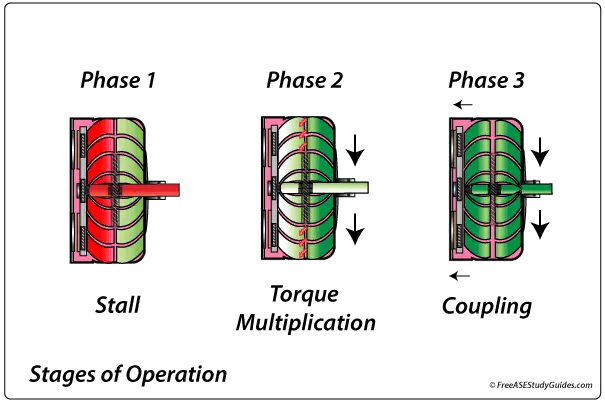
The torque converter has three phases or stages of operation: the stall phase, the acceleration phase, and the coupling phase.
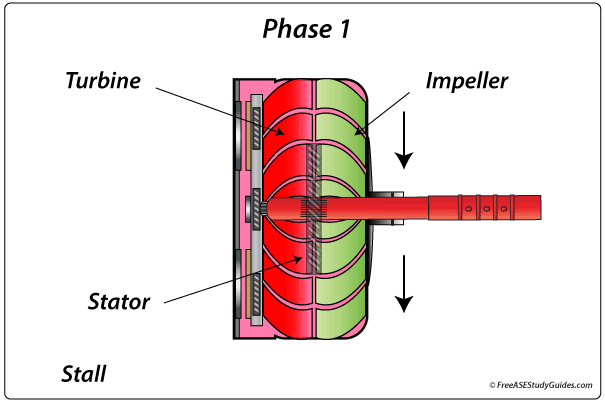
During the stall phase, the transmission is in gear, and the turbine is held stationary by the brakes/drivetrain. The impeller/pump is spinning at engine speed while the turbine is stationary.
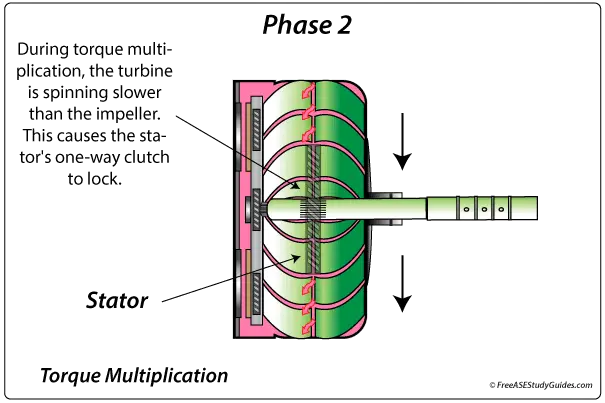
During acceleration, torque multiplication occurs, and the impeller spins faster than the turbine. The stator's one-way clutch locks; the curved vanes redirect transmission fluid in the same direction as crankshaft rotation. This redirected flow assists the impeller, resulting in torque multiplication. This phase occurs when the vehicle accelerates from the stoplight and continues up until cruising speed.
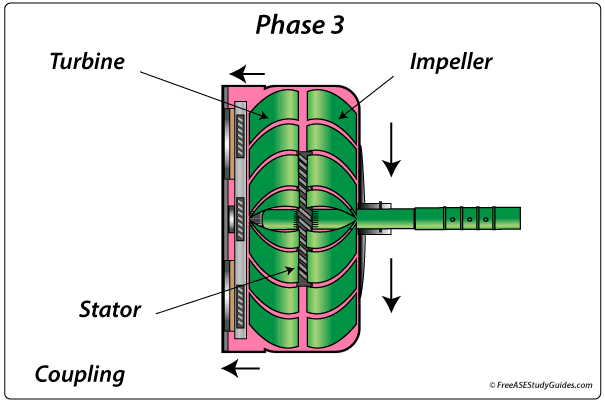
At cruising speeds, the coupling phase occurs; the turbine speed is around 90% of the impeller speed.
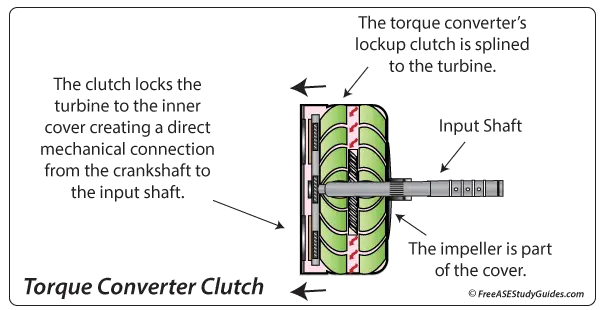
During the coupling phase, the lockup clutch engages. The mechanical connection cools the transmission fluid and increases efficiency.
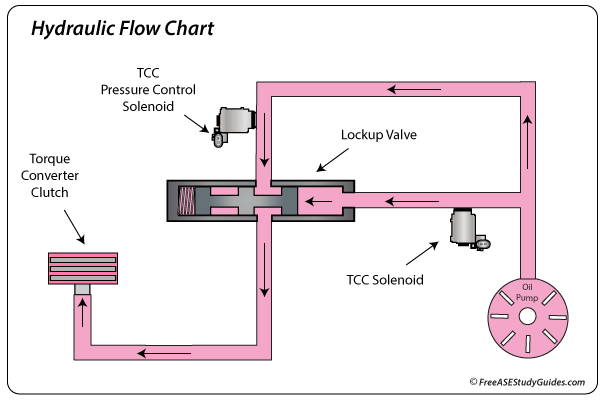
Many modern automatic transmissions partially engage the torque converter clutch in all forward gears except first. A pressure control solenoid varies the pressure to the clutch, improving performance and fuel mileage.